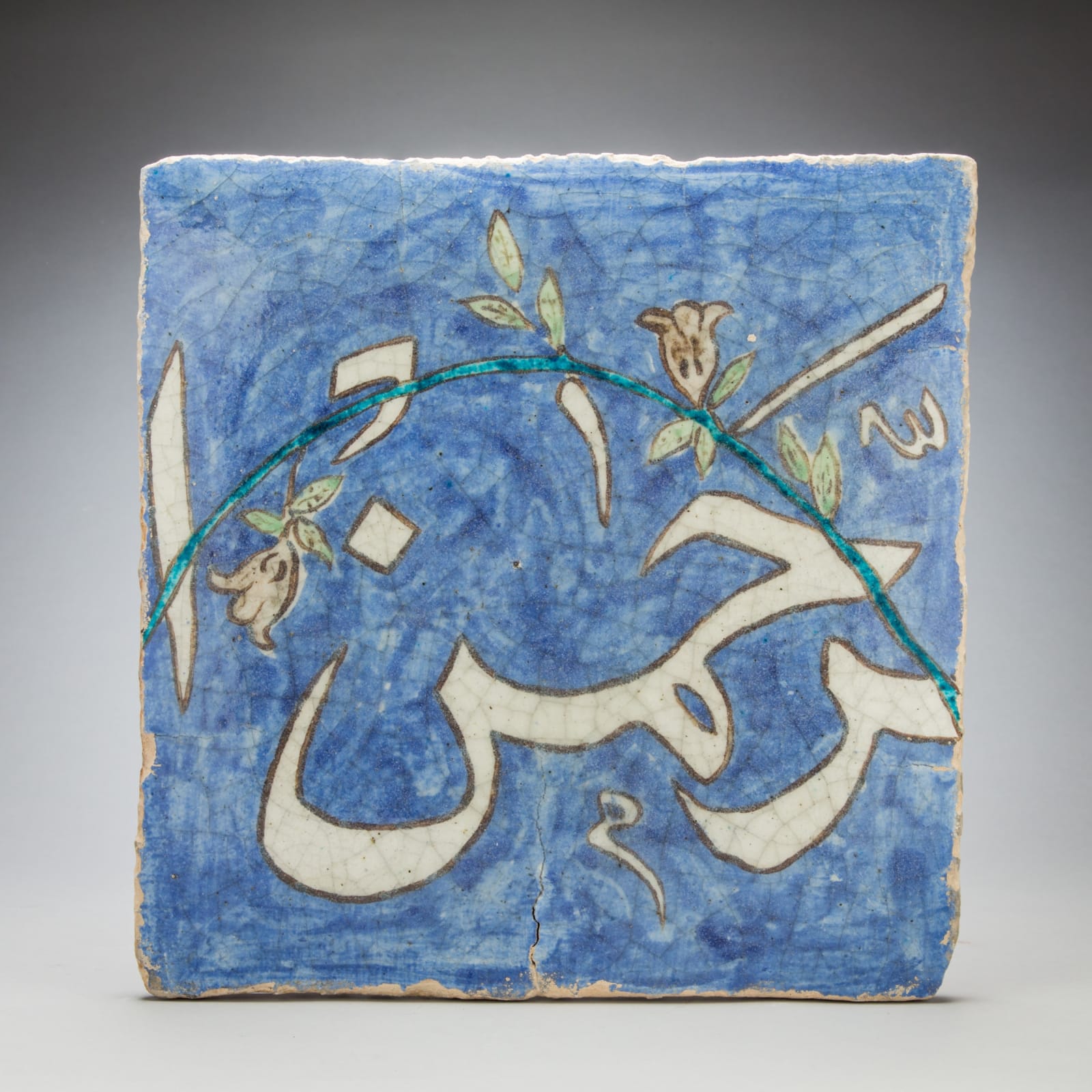Series of Four Inscribed Safavid Tiles in Blue Glazed Background, 1600 CE to 1800 CE
40.5 cm high x 40 cm wide (each)
MS.195
Further images
Safavid art is the art of the Persian Safavid dynasty from 1501 to 1722, in present-day Iran and Caucasia. It was a high point for the art of the book...
Safavid art is the art of the Persian Safavid dynasty from 1501 to 1722, in present-day Iran and Caucasia. It was a high point for the art of the book and architecture; and also including ceramics, metal, glass, and gardens. The arts of the Safavid period show a far more unitary development than in any other period of Iranian art. The Safavid Empire was one of the most significant ruling dynasties of Iran. They ruled one of the greatest Persian empires, with artistic accomplishments, since the Muslim conquest of Persia.
This set of four inscribed Safavid tiles in blue glazed background clearly showcases the excellence in the production of ceramics and in calligraphy typical of this period. Calligraphy has a particular importance in Islamic art, as a consequence of the prohibition to represent human or animal forms, conceived as idols in the Holy Texts. Beautifying inscriptions became then a distinctive form of expression for Islamic artists, often using verses from the Quran or with religious character. In this case we contemplate a set of four tiles, with a delicate blue glazed background, bearing the Basmala: "In the name of God, the Most Gracious, the Most Merciful". The Basmala is one of the most important phrases in Islam and is used by Muslims mostly before starting "good deeds" (for instance, during daily prayer) as well as most daily actions.
This set of four inscribed Safavid tiles in blue glazed background clearly showcases the excellence in the production of ceramics and in calligraphy typical of this period. Calligraphy has a particular importance in Islamic art, as a consequence of the prohibition to represent human or animal forms, conceived as idols in the Holy Texts. Beautifying inscriptions became then a distinctive form of expression for Islamic artists, often using verses from the Quran or with religious character. In this case we contemplate a set of four tiles, with a delicate blue glazed background, bearing the Basmala: "In the name of God, the Most Gracious, the Most Merciful". The Basmala is one of the most important phrases in Islam and is used by Muslims mostly before starting "good deeds" (for instance, during daily prayer) as well as most daily actions.









